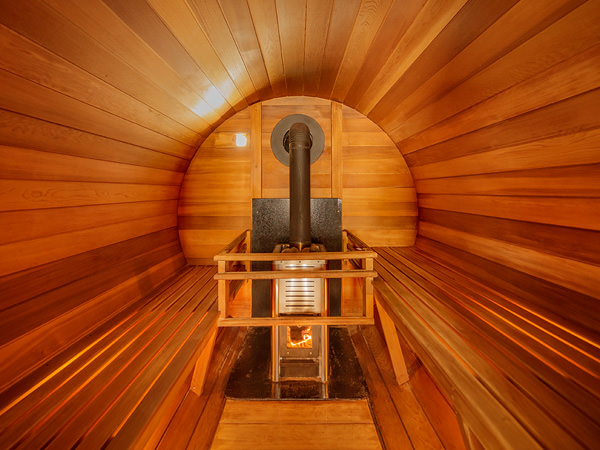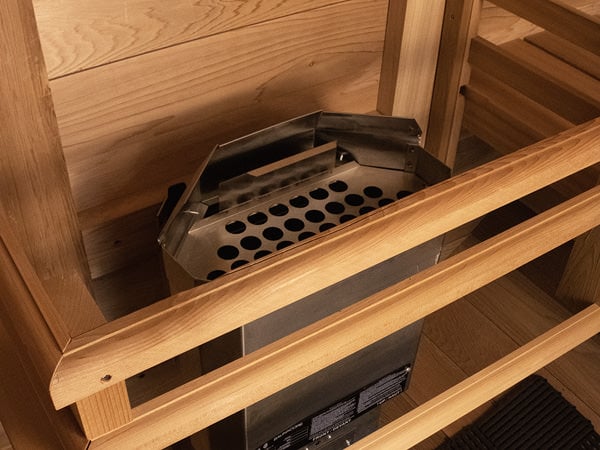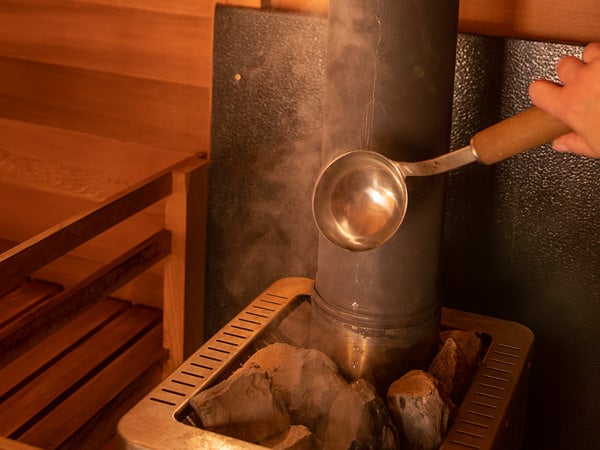When it comes to wellness and relaxation, two popular options often come to mind: the cedar sauna and the steam room. While both are designed to elevate your body temperature, promote sweating, and provide therapeutic benefits, they offer distinctly different experiences. In this blog post, we’ll delve into the differences between a sauna and a steam room, exploring the unique advantages of a cedar sauna, particularly in the form of a barrel sauna. We’ll also discuss the importance of a sauna heater and how these features contribute to creating a perfect sauna room.
The Basics: How Saunas and Steam Rooms Work
At their core, both saunas and steam rooms offer similar benefits – to increase body temperature, promoting sweating and improving circulation. When your body heats up, blood flow increases to the muscles and skin as it works to cool down. This process not only helps with relaxation but also stimulates the production of endorphins—those feel-good hormones that contribute to a sense of well-being.
The Role of Humidity
The key difference between a sauna and a steam room lies in humidity levels. A steam room is characterized by high humidity, often nearing 100%, paired with lower temperatures—typically around 110°F to 120°F. This moisture-laden environment can feel intensely hot because water vapor conducts heat more efficiently than dry air.
On the other hand, a sauna room generally operates at higher temperatures, typically ranging from 150°F to 195°F, with much lower humidity levels. Although saunas can experience bursts of steam when water is poured over hot stones, the overall humidity remains low, allowing for a dry heat experience.
Apparent Temperature vs. Actual Temperature
Understanding the difference between apparent temperature and actual temperature is crucial when comparing these two environments. Apparent temperature takes into account both heat and humidity. For example, a steam room at 120°F can feel similar to a sauna at 180°F due to the high humidity in the steam room. This is because humid air makes it harder for sweat to evaporate, which is the body’s primary method of cooling itself.
In a sauna, the dry air allows for quicker sweat evaporation, making it feel slightly cooler despite the higher actual temperature. This nuanced experience can affect your comfort and how you choose to enjoy your time in either space.

A Closer Look at Cedar Saunas
Why Choose Cedar?
Cedar saunas, especially barrel saunas, have become increasingly popular for their unique combination of aesthetics and functionality. Here are some reasons why a cedar sauna stands out:
- Natural Aroma: The rich, aromatic scent of cedar enhances the sauna experience, promoting relaxation and stress relief. The essential oils released when cedar is heated provide a natural form of aromatherapy.
- Durability: Cedar is known for its resistance to moisture, decay, and insects. This durability ensures that your cedar sauna will stand the test of time, making it a worthwhile investment for your wellness routine.
- Insulation: Cedar wood has excellent insulating properties, allowing it to retain heat efficiently. This means that a sauna heater doesn’t have to work as hard to maintain high temperatures, contributing to energy savings.
- Aesthetic Appeal: The warm tones and fine grain of cedar create a welcoming environment, making your sauna room an inviting retreat. Whether in a traditional setting or a sleek, modern design, cedar saunas add beauty to any space.
Barrel Saunas: The Unique Shape
Barrel saunas are particularly popular due to their efficient design:
- Heat Distribution: The circular shape allows for better airflow and more even heat distribution, eliminating cold spots and enhancing comfort.
- Space Efficiency: Barrel saunas are often more compact, making them suitable for smaller backyards or gardens. Their unique shape allows for optimal space utilization.
- Outdoor Enjoyment: Many people love the idea of enjoying a sauna in nature. A barrel sauna blends beautifully with outdoor settings, providing a serene environment for relaxation.
Easy Assembly: Many barrel saunas come as pre-cut kits, making assembly straightforward and accessible for DIY enthusiasts.

The Importance of the Sauna Heater
A sauna wouldn’t be complete without an efficient sauna heater. The choice of heater can significantly influence the comfort and effectiveness of your sauna experience.
Types of Sauna Heaters
- Electric Heaters: These are the most common type of sauna heaters. They heat up quickly and maintain consistent temperatures, often coming with programmable timers for convenience. Electric heaters are particularly well-suited for barrel saunas and traditional sauna rooms alike.

- Wood-Burning Heaters: For those who prefer a traditional experience, wood-burning heaters provide an authentic touch. While they require more maintenance and preparation, many enthusiasts enjoy the ambiance and unique heat they offer. As added benefit, the high quality stainless steel wood-burning heaters from Northern Lights are also equipped to handle steam as well! Heat with steam…or not? The choice is up to you!

- Infrared Heaters: Infrared saunas operate at lower temperatures, using infrared light to directly heat the body rather than the air. This can be a great option for individuals who may find traditional saunas too hot or stifling.
Choosing the Right Heater
When selecting a sauna heater, consider the size of your sauna room and the type of wood used. A properly sized heater will ensure efficient heating and comfort. For example, a sauna kit requiring a 5 kW sauna heater typically necessitates a similar size steam boiler for a steam room, though steam generators also require water lines.
Safety Features: It’s essential to prioritize safety when choosing a sauna heater. Look for models with built-in safety features such as automatic shut-off functions and temperature controls to ensure a safe and enjoyable experience.
The Therapeutic Benefits of Saunas and Steam Rooms
Health Benefits
Both saunas and steam rooms offer a range of health benefits, including:
- Improved Circulation: The heat helps dilate blood vessels, improving circulation and promoting cardiovascular health.
- Detoxification: Sweating aids in the removal of toxins from the body, contributing to a healthier system.
- Muscle Recovery: Heat therapy can alleviate muscle soreness and stiffness, making it beneficial for athletes or anyone engaging in physical activity.
Stress Relief and Relaxation
In our fast-paced lives, finding time for self-care is crucial. Both saunas and steam rooms provide a dedicated space for relaxation, allowing you to disconnect and unwind. The soothing heat, combined with the natural aroma of cedar in a sauna, can create an environment that encourages mindfulness and stress relief.
Social Benefits
Saunas and steam rooms can also serve as social spaces. Invite friends and family to join you for a sauna session, enhancing the experience and fostering connections. The shared experience of relaxation can deepen bonds and create lasting memories.
Making the Choice: Sauna or Steam Room?
Ultimately, the choice between a sauna and a steam room comes down to personal preference. Both offer therapeutic benefits, and many people enjoy alternating between the two for a balanced wellness routine.
Considerations for Your Sauna Room
When designing your sauna room, keep the following in mind:
- Size and Space: Ensure you have enough room for your desired sauna or steam setup. Barrel saunas often provide space-efficient options.
- Ventilation: A sauna room should have proper ventilation to allow fresh air in and let humidity escape, especially if you plan to add steam to your sauna experience.
- Accessibility: Consider how easy it is to access your sauna or steam room, especially if you plan to use it frequently.
Maintenance: Understand the maintenance requirements for your sauna heater and wood type to ensure longevity and optimal performance.
Both saunas and steam rooms provide unique experiences that can enhance your overall well-being. A cedar sauna, particularly in the form of a barrel sauna, offers aesthetic appeal, durability, and a unique atmosphere that promotes relaxation and health.
With the right sauna heater and an inviting sauna room, you can create a personal oasis for rejuvenation. Whether you prefer the dry heat of a sauna or the humid warmth of a steam room, both options can contribute to a healthier, more balanced lifestyle. So, take your time, enjoy the process, and let the ancient practice of sauna or steam therapy rejuvenate your body, mind, and soul.


